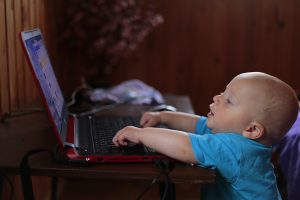Embracing cultural competence and sensitivity is crucial for educators, healthcare providers, and community members to effectively support children with disabilities. Understanding and respecting the diverse experiences of these children is key to providing them with the appropriate care and resources they need.
Educators
Educators can foster cultural competence by undergoing training that focuses on understanding different cultural backgrounds and how they influence the experiences of children with disabilities. Professional development workshops are a great starting point. These workshops can include role-playing scenarios and guest speakers from diverse cultural backgrounds to provide firsthand insights.
Creating a Culturally Inclusive Classroom
- Incorporate Multicultural Materials: Use books, case studies, and other educational materials that reflect a variety of cultures and disabilities. This not only fosters inclusion but also educates all students about diversity. For example, including stories from authors of diverse backgrounds can help children see themselves reflected in the curriculum.
- Celebrate Diverse Holidays: Integrate celebrations of various cultural holidays and events into the school calendar. This not only honors students’ backgrounds but also educates others. Imagine a classroom where students share their own holiday traditions, encouraging peer learning and cultural appreciation.
- Establish Student-Led Cultural Clubs: Encourage the formation of clubs that focus on cultural exchange and disability awareness. These clubs can organize events, discussions, and even mentorship programs. For instance, a cultural club could host a monthly “Culture Day,” where students present aspects of their heritage.
Promoting Understanding and Empathy
By embracing cultural competence, educators can create a learning environment that celebrates diversity and ensures that all students feel included and supported, regardless of their background or abilities. Peer mentorship programs can be particularly effective. Pairing students with disabilities with peers who understand or share similar cultural backgrounds can enhance mutual understanding and support. Additionally, teachers might incorporate empathy exercises into their curriculum, such as storytelling sessions where students share personal experiences and learn to appreciate different perspectives.
Tailored Teaching Strategies
- Differentiated Instruction: Customize teaching methods to cater to the diverse learning needs of children from various cultural backgrounds. This might involve using visual aids, storytelling, or hands-on activities that resonate with different cultural practices.
- Cultural Sensitivity in Curriculum Design: Collaborate with cultural consultants when designing curricula to ensure content is respectful and inclusive. This can prevent cultural misinterpretations and ensure all students feel valued.
Healthcare Providers
Healthcare providers can enhance cultural sensitivity by actively listening to children and their families, respecting their beliefs and values, and involving them in the decision-making process regarding the child’s care. Developing a patient-centered communication model is essential; this involves adapting communication styles to meet the cultural and linguistic preferences of the families.
Continuous Education and Training
- Cultural Competence Workshops: Regularly participate in workshops and seminars that highlight cultural diversity in healthcare. Providers can role-play scenarios to better understand the cultural dynamics at play in healthcare settings.
- Interdisciplinary Team Meetings: Collaborate with professionals from various cultural backgrounds to gain different perspectives on patient care. This practice not only broadens understanding but also enriches the care provided.
Culturally Responsive Care
By acknowledging and valuing the cultural identities of their patients, healthcare providers can establish trust and improve health outcomes for children with disabilities. They can collaborate with families to develop care plans that consider cultural traditions and preferences, leading to more effective and respectful treatment. Case studies of successful culturally tailored interventions can serve as valuable learning tools for healthcare teams. For example, a pediatric clinic might implement a program where family members share cultural practices that influence their approach to health and wellness.
Practical Tips for Providers
- Language Accessibility: Ensure that language barriers are minimized by providing translation services or hiring bilingual staff. This can significantly enhance communication and trust.
- Cultural Liaison Officers: Employ cultural liaison officers to facilitate communication and understanding between healthcare providers and families from diverse backgrounds.
Community Members
Community members play a vital role in supporting children with disabilities by promoting inclusivity and acceptance within the community. Organizing awareness campaigns, supporting advocacy efforts, and creating spaces that are accessible and welcoming to all can contribute to a more supportive environment for these children.
Fostering an Inclusive Environment
- Accessibility Audits: Conduct audits of public spaces to identify and address accessibility issues. This can involve partnering with local government and businesses. For instance, community members might work with city officials to improve sidewalk accessibility.
- Volunteer Programs: Establish volunteer programs that connect community members with families of children with disabilities to provide support and companionship. Volunteers could help with everyday tasks or simply offer a friendly visit.
- Cultural and Disability Awareness Workshops: Host community events where people can learn about different cultures and disabilities through interactive activities and discussions. These events could feature speakers who share personal stories and insights.
Advocacy and Policy Change
By advocating for policy changes and infrastructure improvements that benefit individuals with disabilities, community members can help create a more accessible and inclusive society. Engagement in local government meetings and participation in advocacy groups are practical steps that can lead to tangible change. For instance, community members might propose new legislation to improve public transportation access for individuals with disabilities.
Building Stronger Community Ties
- Inclusive Community Events: Organize events that are inclusive of all abilities and cultures, such as community fairs that feature accessible games and cultural performances.
- Support Networks: Create networks of support for families, where they can share resources, information, and experiences. These networks can help families feel less isolated and more connected.
Building Bridges: Collaboration Across Sectors
Collaboration between educators, healthcare providers, and community members is essential in fostering a culturally competent environment. Interdisciplinary task forces can be established to address the needs of children with disabilities at a community level. These task forces can focus on sharing resources, best practices, and developing joint initiatives that promote awareness and inclusion.
Case Study: A Collaborative Approach
Consider a community where a task force was formed to address the educational and healthcare needs of children with disabilities from immigrant backgrounds. By pooling resources and expertise, they developed a summer program that provided both educational support and healthcare screenings. This program was tailored to respect and integrate the cultural practices of the families involved, resulting in improved educational outcomes and health metrics for the participants. The task force included educators, healthcare providers, community leaders, and family representatives, ensuring that all voices were heard and respected in the planning process.
Practical Steps for Collaboration
- Regular Meetings and Communication: Establish regular meetings between educators, healthcare providers, and community members to discuss ongoing challenges and solutions.
- Shared Resources and Training: Develop shared resources and training programs that all sectors can access, ensuring consistency in cultural competence practices.
Personal Insights and Professional Experience
Drawing from personal experience, I’ve seen firsthand how cultural competence can transform a community. In one instance, a school district where I worked implemented a cultural competence initiative that involved all staff members, from teachers to cafeteria workers. We held monthly workshops focusing on different cultures represented in our student body. The result was a more harmonious school environment where students felt seen and understood, leading to decreased behavioral issues and improved academic performance.
Common Mistakes and How to Avoid Them
- Assuming Homogeneity: Avoid assuming that all individuals from a particular cultural background have the same beliefs or practices. Instead, take the time to learn about each family’s unique cultural identity.
- Neglecting to Involve Families: Failing to involve families in decision-making can lead to misunderstandings and ineffective care or education strategies. Always include family members in discussions about their child’s needs.
- Overlooking Cultural Nuances: Small cultural nuances can have a significant impact on communication and relationships. Be attentive to these details and seek to understand them.
Step-by-Step Guidance for Implementation
- Assess Current Practices: Begin by assessing current practices in your school, healthcare facility, or community regarding cultural competence.
- Identify Gaps: Identify any gaps in knowledge or practice that may hinder effective support for children with disabilities from diverse backgrounds.
- Develop a Plan: Create a detailed plan to address these gaps, incorporating training, resource development, and community engagement strategies.
- Implement Training Programs: Roll out training programs for staff and community members, focusing on areas identified in your plan.
- Monitor and Evaluate: Continuously monitor the impact of your initiatives and make adjustments as needed. Gather feedback from families and children to ensure their needs are being met.
By promoting cultural competence and sensitivity among educators, healthcare providers, and community members, we can create a more inclusive and understanding society that better supports the diverse needs of children with disabilities. It’s a collaborative effort that requires commitment, empathy, and action from all sectors of society. As we move forward, let’s continue to educate ourselves, challenge our biases, and actively seek out opportunities to support and include all children, ensuring they have the tools and environment they need to thrive.



